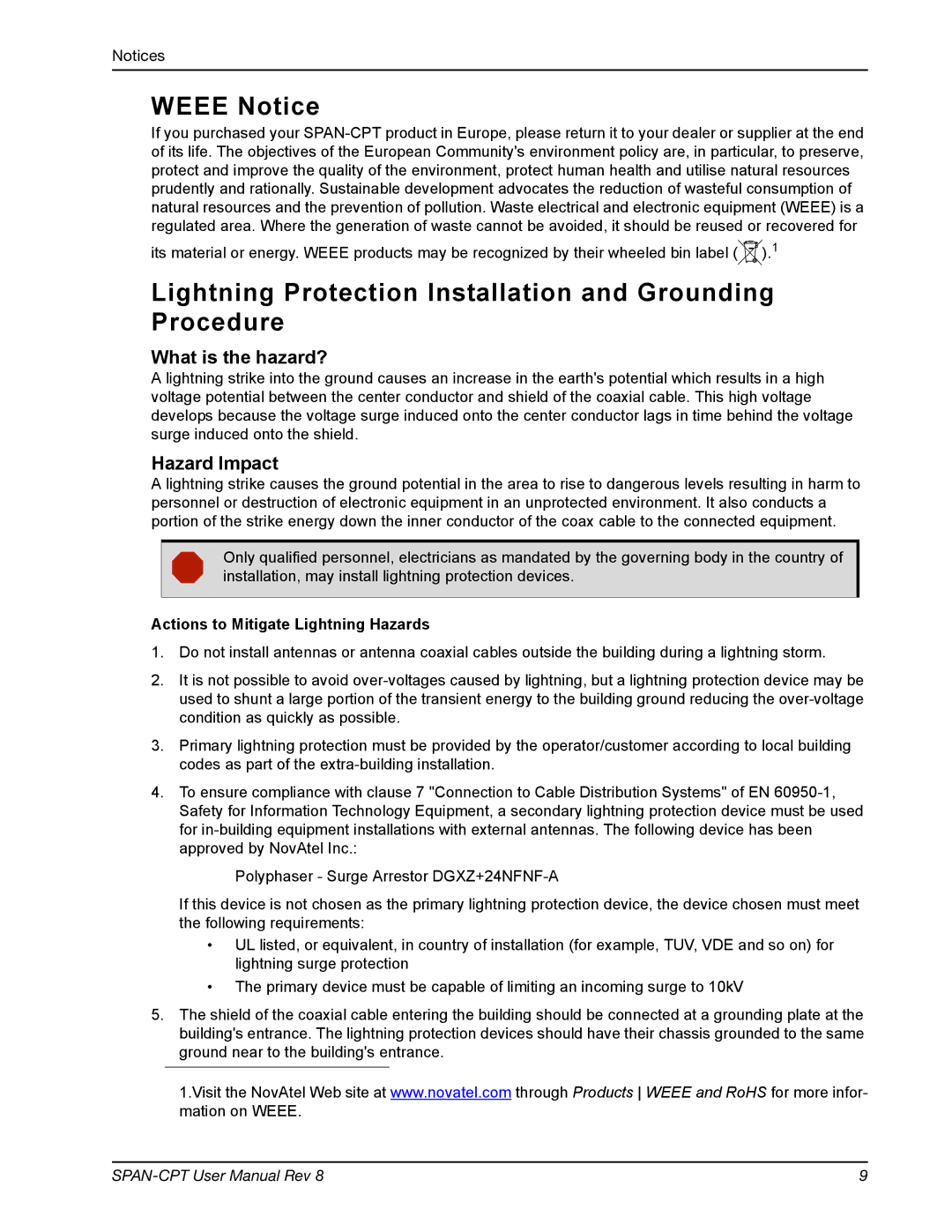
Notices
WEEE Notice
If you purchased your
its material or energy. WEEE products may be recognized by their wheeled bin label (![]() ).1
).1
Lightning Protection Installation and Grounding Procedure
What is the hazard?
A lightning strike into the ground causes an increase in the earth's potential which results in a high voltage potential between the center conductor and shield of the coaxial cable. This high voltage develops because the voltage surge induced onto the center conductor lags in time behind the voltage surge induced onto the shield.
Hazard Impact
A lightning strike causes the ground potential in the area to rise to dangerous levels resulting in harm to personnel or destruction of electronic equipment in an unprotected environment. It also conducts a portion of the strike energy down the inner conductor of the coax cable to the connected equipment.
Only qualified personnel, electricians as mandated by the governing body in the country of installation, may install lightning protection devices.
Actions to Mitigate Lightning Hazards
1.Do not install antennas or antenna coaxial cables outside the building during a lightning storm.
2.It is not possible to avoid
3.Primary lightning protection must be provided by the operator/customer according to local building codes as part of the
4.To ensure compliance with clause 7 "Connection to Cable Distribution Systems" of EN
Polyphaser - Surge Arrestor
If this device is not chosen as the primary lightning protection device, the device chosen must meet the following requirements:
•UL listed, or equivalent, in country of installation (for example, TUV, VDE and so on) for lightning surge protection
•The primary device must be capable of limiting an incoming surge to 10kV
5.The shield of the coaxial cable entering the building should be connected at a grounding plate at the building's entrance. The lightning protection devices should have their chassis grounded to the same ground near to the building's entrance.
1.Visit the NovAtel Web site at www.novatel.com through Products WEEE and RoHS for more infor- mation on WEEE.
9 |
